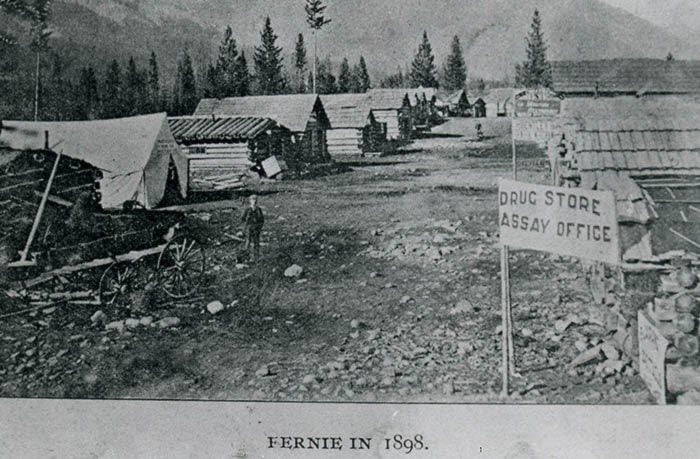The Fernie Museum presents the valley’s history through a unique audio/visual program called Fernie Faces, featured in its main floor exhibit, This is Our Fernie. Through five historic characters Fernie’s fascinating growth is chronicled. This article features Annie Balayti, who was just a young girl when she arrived in the late 1890s.
Annie emigrated from Kosha, Hungary to Fernie in 1898. There wasn’t much here when Annie arrived with her parents, two brothers and her sister. Trees were being cleared to provide space and timber needed to build the town. Her first view from the train’s window was the mantle of the forest, mountain peaks that touched the sky and a muddy dirt track.
The first log houses were being built – huts but not much more. Along the track Annie saw a string of wood shacks and tents with signs pegged to rickety poles that suggested grand enterprises that might one day emerge if the breeze didn’t blow them over first.
Men, Annie’s father included, bragged about how much timber a stand would bring, how much coal in a seam, and how rich they were all going to get. It was only a matter of months before many businesses and hotels sprang up near the train station and the place started to resemble a real town.
But when Annie’s family first arrived, her mother just looked at the wilderness that she had dreamt of as the promised land and she started to cry. Annie believed her mother wasn’t the only one. For the city women there were no cobble stone streets with pretty shops and market stands, for farm girls no cottages and barns – just that dirt road that narrowed to a packhorse track at the forest edge.
The forest was an impenetrable wall of bush with trees that towered over the people and their puny makeshift houses and tents. The forest still loomed even after the town site was cleared and the tall church spires were built and proper houses and buildings were constructed.
To a small girl like Annie those trees were as frightening as the forest in Hansel and Gretel. But she grew to love the forest – and she, and the entire community, was devastated when they saw what was left of that mighty forest after the great fire of 1908. They not only lost their town – they also lost the beautiful surrounding forest.
Annie married Nicholas Kennedy one of Fernie’s early pioneers from Carboneer, Newfoundland. Nicholas built a home in the North End after the 1908 fire, where they raised four children and lived out the rest of their lives. Over 20 descendants of their family still live in and around Fernie.
To learn more about Fernie’s colourful past come explore the exhibit, This Is Our Fernie, at the Fernie Museum. Open every day from 10 am to 530 pm at 491 Second Avenue.
www.ferniemuseum.com.
Follow the Fernie Museum on Faceboo
